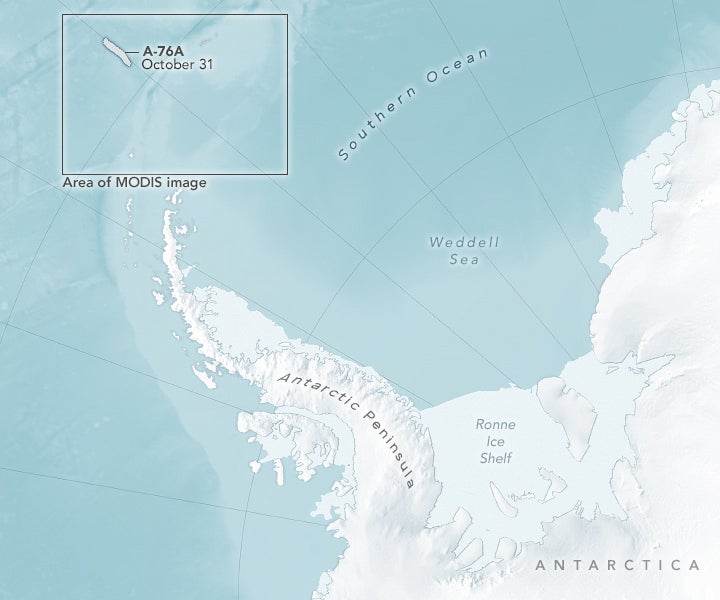Pictured: Iceberg twice the size of London drifting towards treacherous sea passage
The iceberg’s massive parent berg, A-76, broke away from Antarctica’s Ronne Ice Shelf last year
This incredible image shows the world’s largest iceberg drifting towards of the most volatile bodies of water in the world.
Antarctic iceberg A-76A is the biggest remaining piece of what was once the largest iceberg floating in the world’s oceans and is twice the size of London.
The images were taken by NASA’s Terra satellite and show A-76A on its way towards the Drake Passage, which is located between South America’s Cape Horn, Chile, and the South Shetland Islands of Antarctica and is one of the most treacherous voyages for ships on the planet.
The iceberg’s parent berg, A-76, broke from Antarctica’s Ronne Ice Shelf in May 2021 and was the largest iceberg anywhere on the planet at the time. Within a month, the iceberg lost that status when it broke into three named pieces. The largest of those pieces—Iceberg A-76A—now drifts nearly 1,200 miles away in the Drake Passage.

Despite the long journey, the iceberg’s size remains remarkably unchanged. In June 2021, the US National Ice Center (USNIC) reported that A-76A measured around 84 miles long and 16 miles wide. In October 2022, USNIC reported that the berg maintained the same dimensions.
It remains to be seen where A-76A will drift next. It is already more than 310 miles north of its position in July 2022, when the European Space Agency’s Sentinel-1 satellite showed the berg passing the Antarctic Peninsula.
As they continue to drift north, icebergs are usually pushed east by the powerful Antarctic Circumpolar Current flowing through the Drake Passage. From that point, icebergs often whip north toward the equator and quickly melt in the area’s warmer waters.
Join our commenting forum
Join thought-provoking conversations, follow other Independent readers and see their replies
Comments
Bookmark popover
Removed from bookmarks